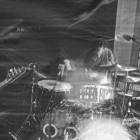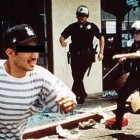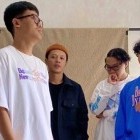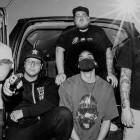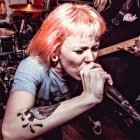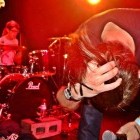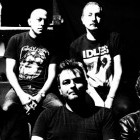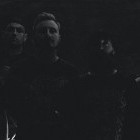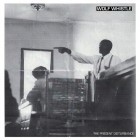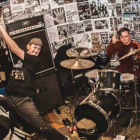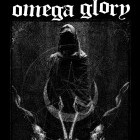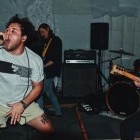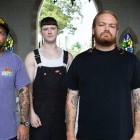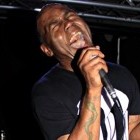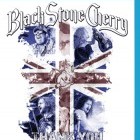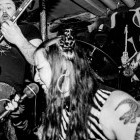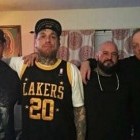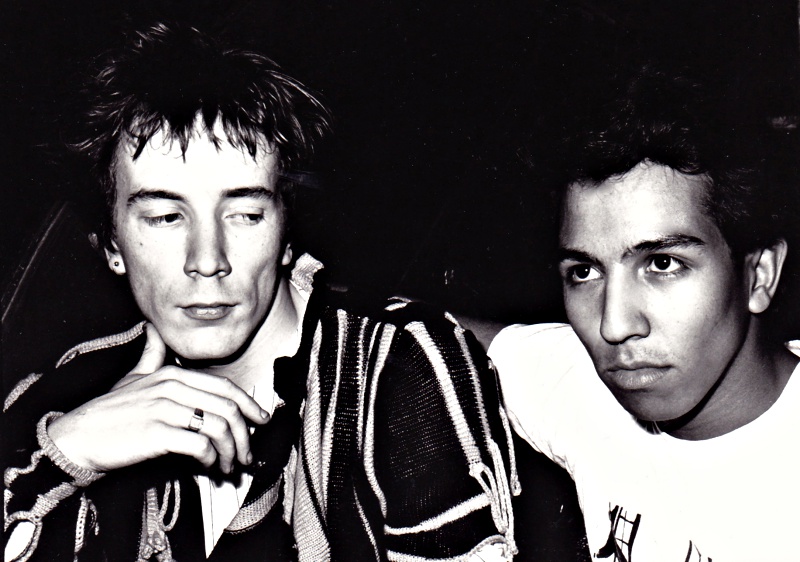
No matter where he is, or who else is around, Michael Alago is usually the most interesting person in the room. I mean, who else do you know that has worked with both John Joseph and Nina Simone? Throughout his life in the entertaiment business, the New York native has carved out the kind of career that you might see in a Hollywood film, so it's not surprising that director Drew Stone's (All Ages: The Boston Hardcore Film, The New York Hardcore Chronicles Film) next documentary is based on Alago's colorful life.
“Who the Fuck Is That Guy”? The Fabulous Journey of Michael Alago—hitting theaters and VOD outlets this summer—chronicles how Michael went from humble roots in Brooklyn to becoming a staple of the downtown New York’s music and arts scene of the '70s, eventually becoming a live booker at the legendary Ritz nightclub and then an A&R executive responsible for signing such varied artists as Metallica, White Zombie, PiL, and Nina Simone. Stone’s film also tackles how Michael—an openly gay man—navigated the heavy metal world, a music scene not always famous for its open-mindedness.
In more recent years, Michael has reclaimed his life after a long struggle with substance abuse. Now re-focused and busier than ever, he's released several books of his photography work, as well as a collaborative poetry collection with Life of Agony's Mina Caputo, and has other projects in the works.
I had the pleasure of getting to know Michael a bit during my time as a music editor at AOL some years back, so it was a treat to chat with him again in anticipation of the documentary's release.
I guess we should treat this as a "Michael Alago 101" for the No Echo readers. So, what part of Brooklyn did you grow up in, and what was your neighborhood like then compared to now?
I grew up in the Boro Park/Bay Ridge section of Brooklyn. I lived there until I was 19 years of age and then moved to Manhattan. The neighborhood back then was mostly filled with Hasidic Jews. The deeper you got into the Bay Ridge and Bensonhurst area, it was mostly Italian with some Hispanic, Polish, and Asian communities.
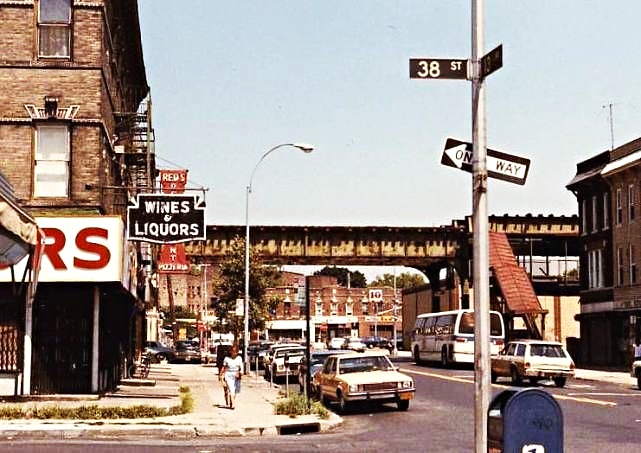
Now, as a fellow Latino who grew up in NYC, I can tell you that I didn’t have any problem learning about my culture as a kid in the '80s. It was all around the city. What was it like for you in the ‘60s and early ‘70s?
Prior to moving to Boro Park, my mom, Blanche, my sister, Cheryl, and I lived in the East New York section of Brooklyn. On our dead end street alone there was a cultural mix of families. Being Hispanic, I never felt deprived of learning about my culture. I frequented many different neighborhoods in the city from various parks, botanicas, restaurants, and museums that satisfied my cultural needs.
Were your parents supportive of your early love for music? You were obviously obsessed with it from a really young age.
Yes, my mom was supportive of my love for music. I had a weekly allowance that I usually spent on purchasing 45 rpm 7" records. I mostly stayed in my bedroom listening to music. A lot of times I sat on our stoop with my gray Panasonic record player and played my stack of 7" 45rpm records. I was pretty much a loner until got taken to see Alice Cooper on June 3rd, 1973. It was the last night of Billion Dollar Babies tour at Madison Square Garden in NYC. I was 14-years-old and that was the beginning of my wild life and crazy adventures. I discovered the club scene about two years later when I was 16.
How did a young teenager get into clubs like Max’s Kansas City in the first place? I imagine you stuck out there like a sore thumb!
The club scene was rich with diversity. In the '70s and '80s, NYC clubs never seemed to card us young people, even when I was 16 and looked like I was 12. Specific to CBGB's, [owner] Hilly Cristal let all us underage kids in the club as long as we didnt drink. Needless to say, drinks were snuck in abundantly. We loved Hilly. RIP.
Who were your mentors when you first got into the NYC music scene in the ‘70s?
No mentors in the beginning. I just paid attention to music, art, and theatre that I had been reading about in various publications. I independently forged my own path. A mentor entered my life in 1980 in the form of Jerry Brandt at The Ritz. Much love and respect to Jerry.
Of all the bands you saw during those early years in NYC, who would you say was the best live performer?
Since I was out every night as a teenager, there was not any one performer I can say was the best. I adored Wendy O. Williams and the Plasmatics. Back then, the Village Voice was my bible for information on what was happening in the club scene and independent movies houses. I loved the back pages of the Voice that had all porn theaters listed, too. Back to your question about best performances. I would have to say the Dead Boys, Cro-Mags, Misfits, Black Flag, Patti Smith, Lou Reed, David Bowie, Cherry Vanilla, Todd Rundgren, and the list goes on.
SEE ALSO: The Hispanic Impact on the Early New York Hardcore Scene
You’ve been shooting photos since back then. Did you have any formal training, or did that start as more of a hobby kind of thing?
I attended the School of Visual Arts for one year around 1978, but in the end, my knowledge of photography has been self taught. It was a hobby back then. I carried around my trusty Polaroid and Minolta 35mm film camera every where I went.
Doing research for this interview, I saw that you even had a liner note credit for your photo work during the earlier years.
My only photo credit as part of liner notes was as a teenager, in 1977. It was for Wayne County and the Electric Chairs' Blatantly Offenzive EP. This was actually my first published work, thanks to Peter Crowley. I loved that this magical photo came from the very last frame on the camera roll.
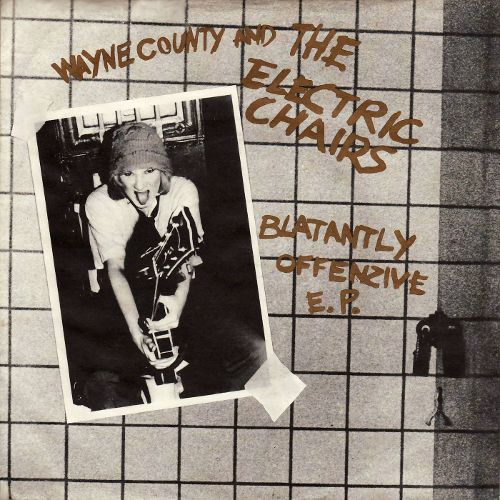
How did you go from music fan/photographer, to talent booker at The Ritz, a hallowed venue in NYC?
I have always felt blessed. One day when I was out to lunch in 1980 in the East Village I came upon a building on East 11th St. called Casa Galicia. It had been closed a while and there was a sign on the door that said "Video Club opening." I went in looked around the beautiful Art Deco building and a man in the balcony asked me what I wanted as it was day time and the venue was closed. I told the man I wanted a job. The man was the legendary Jerry Brandt. He called me up the balcony and we started talking about music. Everything from the Great American Songbook to the popular music of the day. He took a liking to me and gave me a job. Wow! I was now in the music business and this was the most exciting moment of my life. I learned so much from Jerry in the three years that I was there that set me up for the future years of my career.
I then got an A&R gig and I worked as an executive in that specific department for the next 22 years. I had wild success at both Elektra Records and Geffen Records and had a blast at Palm Pictures working for the great Chris Blackwell. I usually forget to mention that i worked for a moment at the short lived UNI Records where I signed the group Swans.
When you first got the A&R gig at Elektra Records, was there any sense of fear and insecurity, or are those foreign concepts to Michael Alago?
I don’t think I had fear or insecurity walking in to my first A&R gig at Elektra. I remember it to be a very magical and exciting time.
An interesting aspect of your Metallica signing is that both you and the band were new at the whole major label thing, and came from underground origins. How much did the band members lean on you for guidance?
There must have also been a lot of trust involved in that relationship that you didn’t want to betray. Metallica and I were new to the major label corporate structure. Since I was the A&R executive that signed them I was everything to them at the label. I think it helped that we were all about the same age in our early 20s and we related to each other brilliantly.
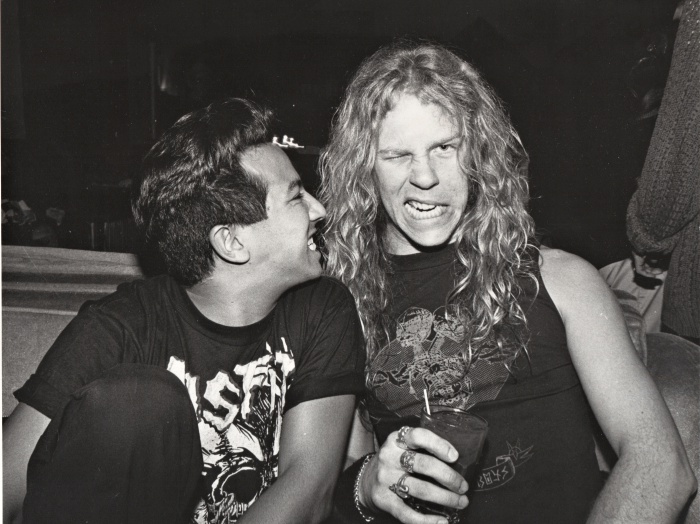
You signed Shrapnel, a NJ band that featured Dave Wyndorf (Monster Magnet), Daniel Rey (producer: Ramones, Misfits), and Phil Caviano (Blitzspeer).
Shrapnel from Red Bank, NJ were my very first signing. I knew the band from previously booking them at The Ritz and was very fond of them. I signed them to a 5-song EP deal with Elektra. Psychedelic Furs drummer Vince Ely produced the EP. Nothing much happened with the record but after all these years I am still very close to Daniel and Dave and Philip. Best of friends.
You're currently working with Bloodclot (members of Cro-Mags, Wasted Youth, Murphy's Law, Queens of the Stone Age), but something I believe I heard once was that you were actively trying to sign the Cro-Mags during the ‘80s. Is there any truth to that, and if so, why didn’t it end up happening?
My working relationship with Bloodclot was in getting them a fantastic record deal with Brian Slagel’s label, Metal Blade. I got Zeuss to produce the album and it gets released July 2017. I am proud of the recording. To answer part 2 of your question, I was a great fan of the Cro-Mags and went to see them live every single chance I got. I didn't sign them in the '80s because as cool as Elektra Records was, I felt it would do the band a great disservice bringing them in to a corporate structure, so I just remained a huge fan and supported them on a personal level any time I could.
In addition to Metallica, another huge hard rock act you signed was White Zombie. If you listen to their earlier stuff on Caroline Records compared to the material they cut under your watch, it’s like a completely different band, at least musically.
Oh my God! I loved those noise monsters White Zombie [laughs]. They were totally a different band when they were on Caroline Records compared to when they made their leap to major label, Geffen Records. Thank you, Daniel Rey, for introducing them to me. I first saw them at a small club on Lafayette St. in the East Village and they were making a mighty loud racket. I immediately fell in love with the noise and the look of the band. I spoke to them after the gig. They were all sweaty and Rob’s [Zombie] dreadlocks were flying all over the place. The band initially recorded a demo for Geffen Records. Jim Thirlwell (FOETUS) produced the marvelous demos. I dont remember exactly why he didnt produce the first album. I think it was about some ego clashing with Rob. I also remember wanting a more commercial White Zombie sound for the Geffen label, so we got Andy Wallace (Slayer, Nirvana) to produce and mix the album. That first record was La Sexorcisto: Devil Music Volume One.
Who are some other metal/punk bands you signed during your A&R career? I know Flotsam and Jetsam were one of them.
Some of my signings after Metallica were Metal Church, Flotsam and Jetsam, White Zombie, Misfits, Public Image Ltd, Alan Vega, and Swans.
SEE ALSO: 2017 interview with Ras Israel Joseph I (Bad Brains vocalist on their Rise album).
Outside of the rock acts you signed, you also have worked with such artists as Nina Simone, Cyndi Lauper, and Michael Feinstein. Was it tough to convince the powers that be at the labels that you could also dive into non-rock projects?
I was very lucky to work for a very generous chairman at Elektra Records, Bob Krasnow. He gave his A&R staff reign to sink or swim with their signings. When I signed Nina Simone to Elektra in 1992, it was to be her last full-length recording and that record was titled A Single Woman.
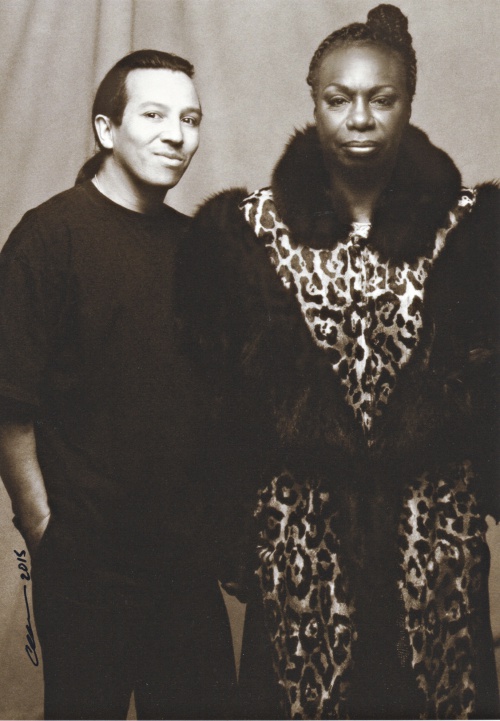
The first recording for Elektra with Michael Feinstein was the Isn’t It Romantic album produced and arranged by the great Johnny Mandel. As for Cyndi Lauper, we were good friends and I was asked to A&R her dance recording, Bring Ya to the Brink, and then Memphis Blues, which was nominated for a Grammy.
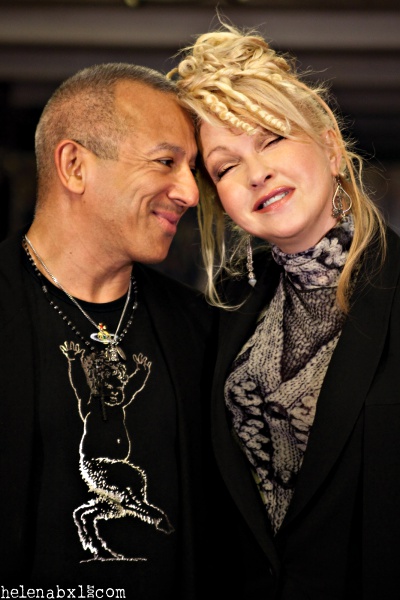
During your record company years, were you living like many of the musicians you hung out with? In other words, were you partying a ton?
Yes, during my A&R years I did a lot of partying that nearly killed me twice. In 2017 Iam clean and sober 10 awesome years. "One Day At A Time."
Since your label days, you’ve had a successful career as a photographer.
When I left the record labels in 2004, I started shoooting photographs of men..mostly big tattooed and sometimes scarred. I published my first little book with the help of $5000 dollars that the generous Mike Gallagher gave me and that book was called Rough Gods. It sold out the print run of 2,000 units which got German publisher Bruno Gmunder interested in my work. Since then, I have two more books out: Brutal Truth and Beautiful Imperfections.
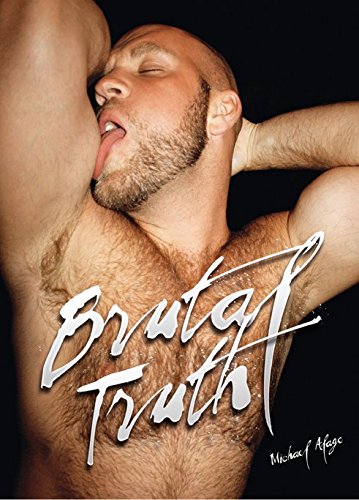
night blooming jasmine will never smell the same is a book you co-wrote with Mina Caputo of Life of Agony. I’m not much of a poetry guy, but I picked up the book because I’m a fan of both of your and Mina’s work, and I’m glad I did. I know a lot of people reading this probably feel the same way I did about the idea of a poetry book, but I heavily recommend night blooming. It’s obvious that you and Mina are great collaborators. In addition to the book stuff you’ve done together, you have also helped her with her solo musical work.
Mina Caputo is family to me. We love each other. We Facetime everyday and love being in each others lives. The two projects I worked on was with Keith. That’s Mina before she started transitioning. The first project was the 1999 classic Died Laughing album that I executive produced. It is still one of my all-time favorite records I was involved in. The second was our night blooming jasmine book of poems, observations, and rants [laughs]. Mina is like a soul mate. We love life and words and books and sometimes the same music. It’s amazing chemistry we have when we are together. Thats why the working relationship is so easy.
That brings us to “Who the Fuck Is That Guy”? The Fabulous Journey of Michael Alago, the new documentary on your life and career. The film was directed by Drew Stone, a name familiar to most No Echo readers for two of his other docs: All Ages: The Boston Hardcore Film and The New York Hardcore Chronicles Film. How far back do you and Drew go back together, and how did he pitch you the idea for the doc?
Drew and I initially met in 1997 when I signed the Misfits to Geffen Records and A&R’d the American Psycho album. He was managing Subzero and there was a European tour scheduled. Sardonica were also on the bill. All I remember was lots of drinking and fighting [laughs]. Fast forward years later we saw each other at a Cro-Mags gig. We started talkin’. He thought my life was interesting and that was the beginning of the discussion that led to the documentary.
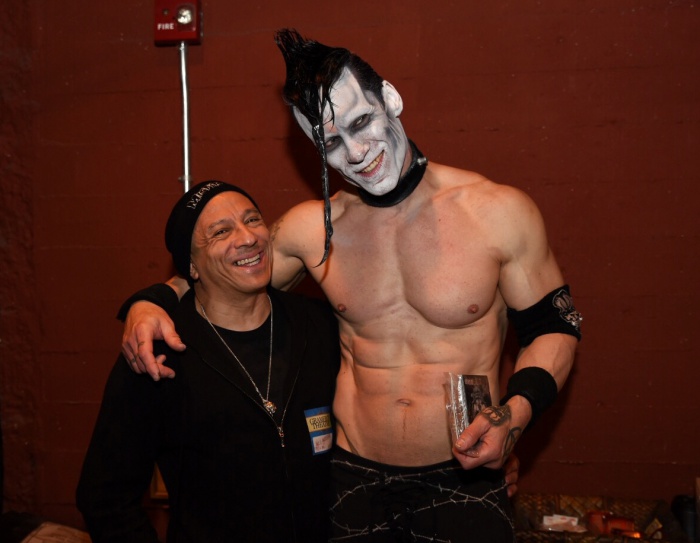
Did you have any apprehension to go back and relive any portion of your life, or did you jump in headfirst, no filters?
I just jumped in the film. My life is an open book. I dont regret the past but I definitely focus on the here and now and enjoy the clear and focused life that I currently have.
There’s usually a lesson one could take from these kinds of films, so what would you hope someone would take from yours?
Live your life as true as you can. Be honest. Pay attention. Use a condom. Do what makes you feel the happiest. The journey is not always easy but it can be very rewarding. Smile at everybody you meet. Get rid of resentments the moment they come up in your life. Live in love and not fear.
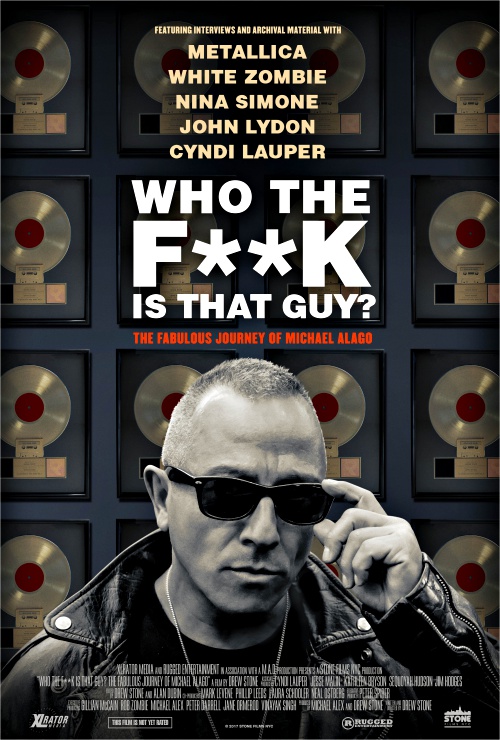
What else is on deck for you? It seems like you’re busier than ever!
A Polaroid book of portraits of tricks and hustlers that I hope to have published in 2018.

Of all the rock records your worked on, which one do you think is the most underrated, and why do you think it fell under the radar?
I think the most beautiful and haunting recording that is underrated and saw no real promotion was Swans' The Burning World, produced by Bill Laswell. It was originally on UNI Records, where I worked for a brief stint. They did nothing to promote it, so it floundered. I think it has seen the light of day again on a smaller label called Water and people tell me its a underground cult classic. That warms my heart as I adore [Swans guitarist/vocalist] Michael Gira.
***
“Who the Fuck Is That Guy”? The Fabulous Journey of Michael Alago will be presented in special screenings in Brooklyn and Hollywood (see below for details), and the film will also be available on VOD and iTunes on July 25.
Theater screenings:
July 31st 2017 at 7:30pm
Nitehawk Cinema
136 Metropolitan Ave
Brooklyn, NY 11249
Get tickets here.
July 21st - July 27th
Arena CineLounge
6464 W Sunset Blvd
Hollywood, CA 90028
Tickets on sale two weeks prior to July 21 here.
Tagged: michael alago
